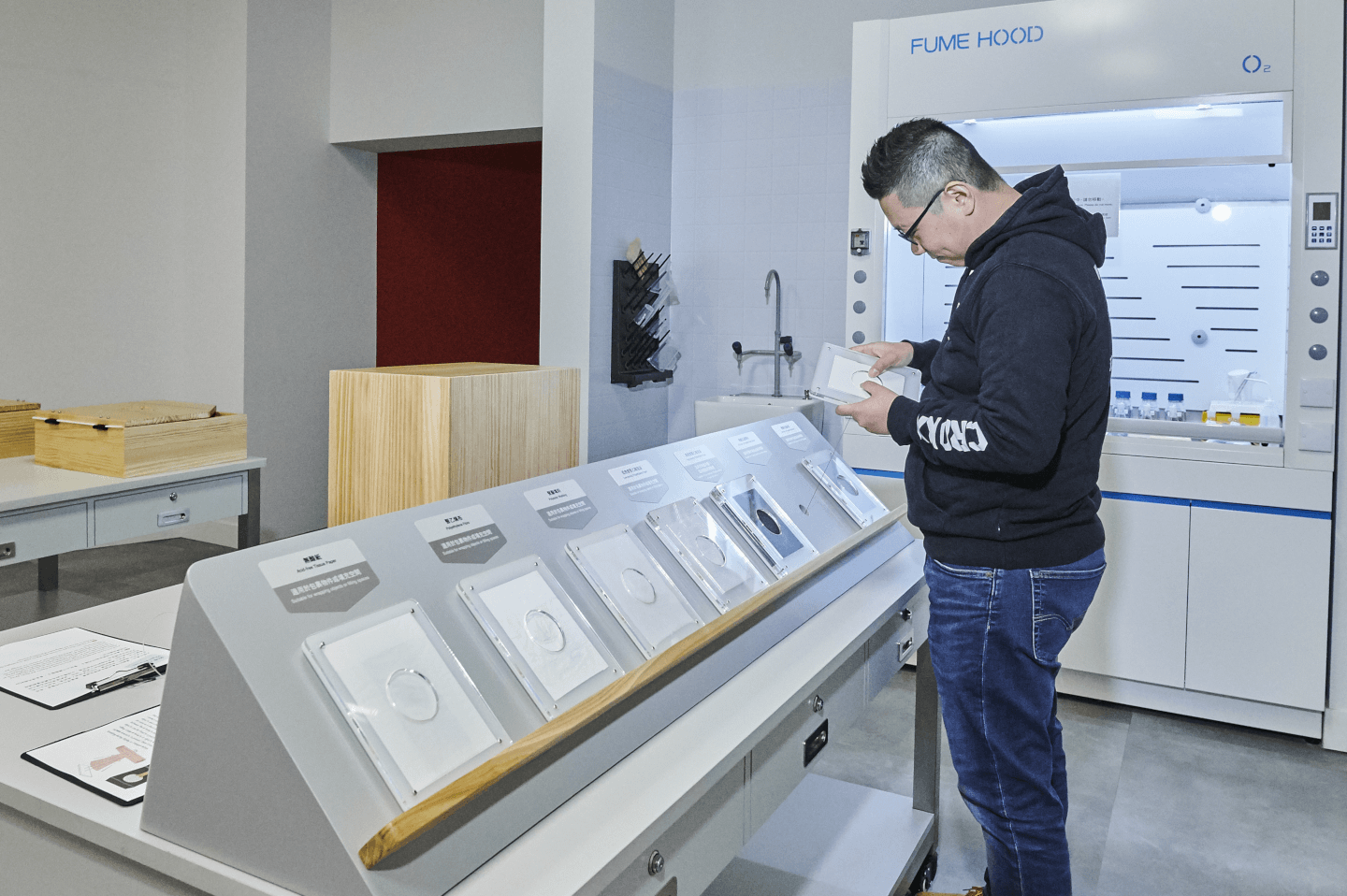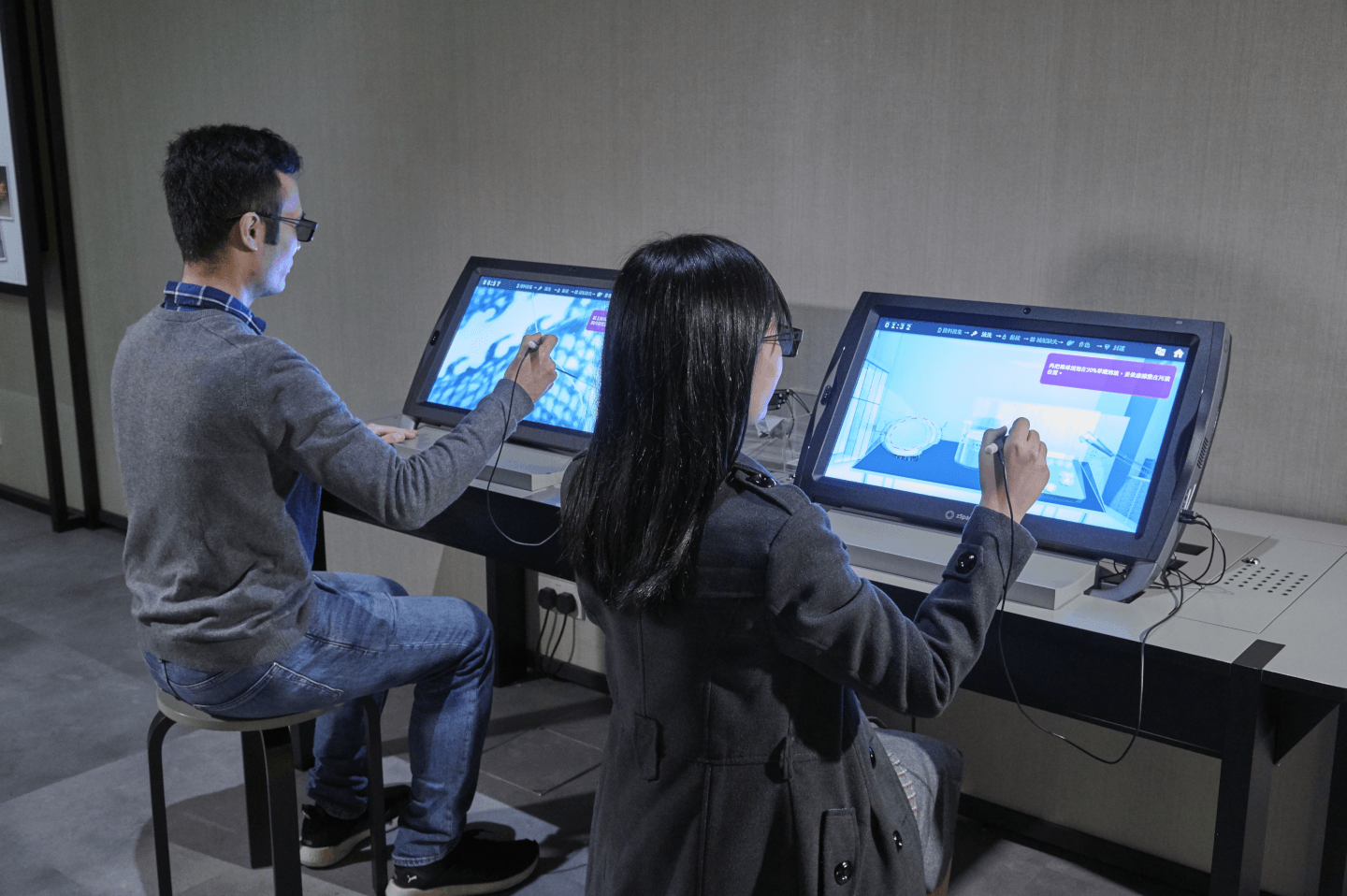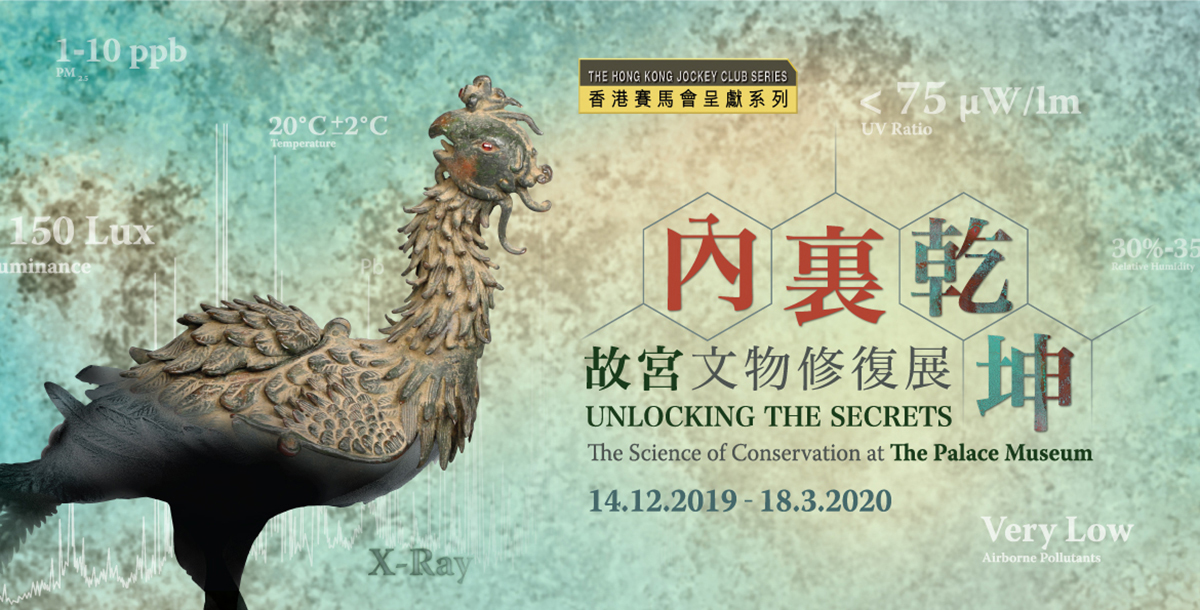Interactive Experience
Interactive Exhibits

Condition reports
To be a successful conservator, you must be meticulous about the condition of artefacts. Let’s take the challenge to see if you can find all the defects in the mock artefacts.

Agents of Deterioration: Incorrect temperature and relative humidity
Each type of material has its own ideal storage temperature and relative humidity requirements. Under the microscope, you can see the mould patches on leather caused by high relative humidity; through a special setup, you can observe how temperature fluctuation can deform a material.

Agents of Deterioration: Visible light, UV and IR
Even seemingly innocuous light can do damage to artefacts. In this exhibit, you can see and learn how visible light and ultraviolet can damage the dyes and materials in artefacts.


Agents of Deterioration: Physical forces
Artefacts may be damaged by external forces such as impacts and shocks caused during display, transportation and storage. Various packaging materials with different properties are displayed that you can touch to feel their textures to gain a better understanding of them.

Agents of Deterioration: Pollutants
Pollutants are everywhere and can cause chemical reactions with certain materials and produce by-products or accelerate material deterioration. Have you seen darkened silverware before?

Agents of Deterioration: Pests
Pests including termites are a major threat to artefacts containing organic materials. These exhibits outline the various pests that may damage artefacts and some of the preventive measures used to combat them.

Weaving to repair
Textile items are a major kind of artefact. By operating a weaving machine, you can gain a better understanding of this craft which plays an essential role in the conservation of textiles.

Defect study of the Krishna Yamari portrait thangka
There is a special method to help reveal defects that are usually hard to detect: transmitted light photography. This computer exhibit will tell you what it is and introduce the defect location diagram used in artefact conservation.

X-ray fluorescence spectroscopy analysis on the Kurukulle portrait thangka
X-rays are not only able to help us see the internal structure of objects, they can also be used to identify the elemental compositions of materials such as paints in thangkas, etc. This computer exhibit will tell you how this is done and show you some related “mysterious” images.


Conservation of inlaid and ceramic artefacts
How can we restore a damaged artefact to its former glory? These immersive VR games will lead you through each of the steps involved in the conservation of inlaid and ceramic artefacts.

Analytical study of artefacts
You may be amazed to know that modern technology allows us to learn the chemical composition of a substance merely by shining a beam of x-ray, laser or IR on it. The AR exhibits in this exhibition will introduce you to these advanced analytical methods and their principles.

Fibres under the microscope
There are a number of methods to identify various types of fibres including infrared spectroscopy and optical microscopy, etc. By looking through this microscope, you will understand how to identify a fibre based on its microscopic structure.

Timber compare
The furniture collections in The Palace Museum were meant to be used by the emperors and were made from the finest timbers. Now you can take a look at and feel those precious timbers and learn more about them.

Mortise and tenon
Mortise and tenon joints have been used in China for thousands of years to build furniture and large architectural structures without using nails. On this table you can try out and learn about the secrets of some delicately designed mortise and tenon joints.

